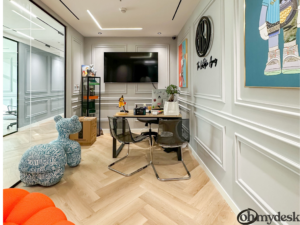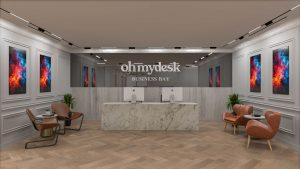Optimizing workspace in Dubai is essential for businesses that want to thrive in a competitive environment. Understanding the local regulations and implementing best practices can significantly enhance both productivity and employee well-being
In a dynamic city like Dubai, where businesses of all sizes and sectors are rapidly growing, the design and layout of workspaces play a crucial role in the success of an organization. Adhering to local standards for office spaces is not just about compliance; it’s about ensuring a work environment that fosters productivity, employee well-being, and enhances the company’s brand image. This article explores the minimum workspace requirements in Dubai, based on local regulations and international best practices.
1. Background and Importance of Workspace Standards
While Dubai’s regulatory framework is less stringent than in some other countries, it still emphasizes health, safety, and well-being at work. International standards, such as those from the International Labour Organization (ILO), recommend a minimum workspace of 5 to 6 square meters per workstation. In Dubai, however, these standards are often adapted to local specifics, considering space density, the type of business activity, and office layout.
Optimizing workspace is essential not just for employee comfort but also for the overall performance of the business. A well-designed space can reduce the risk of occupational illnesses, increase employee satisfaction, and consequently improve productivity.
2. Legal Requirements in Dubai: What the Dubai Building Code (DBC) Says
The Dubai Building Code (DBC), available through the Dubai Municipality, sets out the minimum standards that every office space must meet. These standards cover several critical aspects, including:
•Minimum space per employee: Although recommendations vary, a typical office in Dubai requires between 8 and 10 square meters per employee in an open-plan office environment. This space allows not only for necessary furniture but also for smooth circulation and a comfortable working environment.
•Common areas: It is crucial to provide well-proportioned common areas, such as meeting rooms, kitchens, and break areas. These spaces should be appropriately sized relative to the number of employees to avoid overcrowding and promote a pleasant work environment.
•Safety and access standards: The DBC imposes strict rules on fire safety, evacuation, and accessibility for people with disabilities. Every office space must be designed to minimize risks and ensure the safety of all occupants.

3. Factors Influencing Office Space Design in Dubai
Beyond legal requirements, several factors need to be considered when designing or selecting office space in Dubai:
•Space density: Companies must choose between high, medium, or low-density layouts depending on their needs. High-density offices, for example, may accommodate between 80 and 150 square feet (approximately 7 to 14 square meters) per employee, while low-density offices may require between 250 and 500 square feet (approximately 23 to 46 square meters) per employee.
•Type of activity: Certain activities, such as call center work or laboratory research, require more space due to the nature of the equipment used and specific needs for privacy and safety.
•Future growth of the business: When planning space, it is essential to consider the potential for future expansion. Given Dubai’s status as a rapidly growing commercial hub, businesses should plan for sufficient space to accommodate new employees or new divisions.
4. Best Practices for Optimal Office Layout
Office layout should not only meet minimum space requirements but also incorporate several best practices to maximize the potential of the workspace:
•Ergonomics: Furniture should be chosen based on the ergonomic needs of employees, with adjustable chairs, spacious desks, and layouts that encourage movement.
•Natural light: Access to natural light is essential for the mental and physical health of employees. Offices should be designed to maximize exposure to natural light while avoiding glare.
•Ventilation and acoustics: Good ventilation is crucial for maintaining a healthy environment, while acoustics should be managed to minimize noise and allow for optimal concentration.
5. Finding the Ideal Space with Oh My Desk
Whether you are a small business on the rise or a well-established corporation, Oh My Desk offers flexible solutions tailored to your needs. Our offices are designed to meet Dubai’s standards while offering a modern and functional environment. We provide spaces that can be fully customized to fit your company’s identity and needs, with the flexibility to expand or downsize as your business evolves.
This article is designed to provide a comprehensive overview of standards and best practices for office space in Dubai. It is recommended to regularly consult updates from the Dubai Building Code and collaborate with local experts to ensure your workspace is compliant and optimized for your business’s success.
